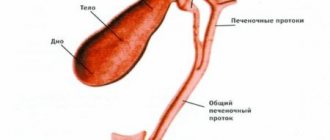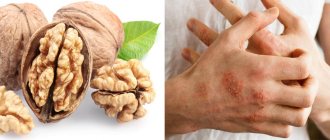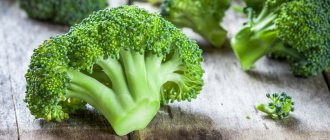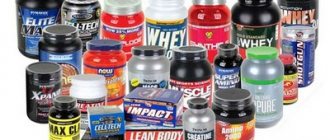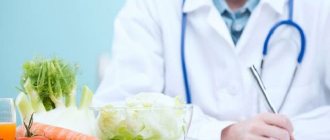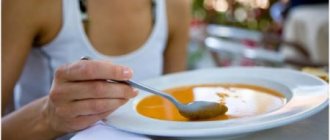General rules
Esophagitis is inflammation of the mucous membrane of the esophagus. Chronic diseases of the esophagus are most often associated with the reflux of gastric and duodenal contents into the esophagus (esophageal reflux). Hydrochloric acid , pepsin , and bile acids are considered factors of aggression that have a damaging effect. At the same time, bile acids can also cause malignancy (malignancy). The appearance of reflux is influenced by many factors: impaired gastric motility, short esophagus, decreased tone of the esophageal sphincters, diaphragmatic hernia or increased intra-abdominal pressure.
Thus, esophagitis is the most common complication of gastroesophageal disease and occurs in a third of patients suffering from this disease. There are catarrhal (non-erosive) and erosive forms of the disease. For a long time it was believed that these were successive stages of development, but the results of observations suggest that these forms do not tend to transform into one another and exist independently. It has also been found that esophagitis is not caused by direct mucosal acid damage, but by complex cytokine-induced mechanisms .
Separately, it is worth highlighting esophagitis caused by taking medications (these include non-steroidal anti-inflammatory drugs and biosphosphonates), radiation therapy and Candida fungi.
The bacterium Pyloric Helicobacter plays a major role in the development of gastritis (meaning the chronic form). Therefore, all patients with chronic gastritis are advised not only to undergo endoscopy, but also to diagnose H. Pylori infection.
With gastritis and esophagitis, the patient is bothered by epigastric pain, heartburn , sour belching and chest discomfort (feeling of a lump). Heartburn may worsen when lying down, after eating and eating foods that weaken the tone of the esophageal sphincter (alcohol, coffee, animal fats, chocolate, citrus fruits).
“Small” organic signs of gastrointestinal damage (gastritis and catarrhal esophagitis) are easier to treat than “large” (ulcerative esophagitis) and functional disorders.
The nutrition of patients is certainly of great importance. Eating spicy foods, hot and rough foods has an irritating effect and aggravates the course of gastritis and esophagitis. And fatty and fried foods, smoked foods, and alcohol cause increased reflux, which maintains inflammation of the esophagus. Eating a lot of food at night causes increased production of hydrochloric acid and contributes to its reflux into the esophagus at night.
The diet for gastritis and esophagitis is aimed at sparing the mucous membrane of the stomach and esophagus, and involves reducing the frequency of reflux. In this regard, it is recommended:
- split meals and moderate meals in the evening;
- consumption of products with an alkaline reaction (sour cream, cottage cheese, boiled meat, milk, steamed omelettes);
- limit the consumption of foods that have an irritating effect (hot, spicy, alcohol, coffee, onions, garlic, citrus fruits, sour foods);
- exclusion of foods that reduce the tone of the esophageal sphincter (animal fats, carbonated drinks, chocolate, strong coffee, rye bread).
For reflux and heartburn symptoms:
- quitting smoking, since nicotine weakens the tone of the esophageal sphincter;
- avoid bending over and performing exercises that involve abdominal tension;
- avoid constipation, as straining increases intra-abdominal pressure;
- exclusion of foods that cause flatulence (legumes, grapes, carbonated drinks, kvass, yeast baked goods, bread, raisins);
- Avoid taking medications that can cause reflux (beta blockers, tranquilizers, sedatives, theophylline , nitrates, prostaglandins, calcium channel inhibitors).
For these diseases, food should be boiled or steamed. The degree of sparing (meaning rubbing of food) depends on changes in the mucous membrane and the severity of symptoms. In case of erosive lesions of the mucous membrane of the stomach and esophagus, as well as severe pain symptoms, the most gentle diet is recommended, corresponding to dietary Table No. 1A :
- Meat/poultry/fish dishes prepared in the form of puree or soufflé (the meat is scrolled several times or beaten in a blender).
- Decoctions of cereals, pureed soups, puree soups with the addition of raw beaten eggs or cream.
- Milk, cream, thoroughly pureed cottage cheese or cottage cheese soufflé.
- Steamed omelettes or soft-boiled eggs.
- Buckwheat or oatmeal porridge, boiled in water and, if desired, milk. You can prepare pureed semi-liquid porridge with butter.
- Jelly made from berries and fruits, fruit jellies with sugar and honey.
- Tea with milk, rosehip infusion, diluted juices.
With catarrhal esophagitis and gastritis, there is no need for maximum sparing of the mucous membrane and patients are recommended to eat Tables No. 1B or No. 1 , in which wiping of food is not provided. Table No. 1 is suitable for long-term or constant nutrition , since its composition is complete and at the same time gentle on the stomach. No. 1 is recommended during the period of recovery and consolidation of treatment results. It is fashionable to use this therapeutic food during periods of mild exacerbation or in the autumn-spring period, when the patient is taking anti-relapse treatment.
All irritating foods are excluded - broths, citrus fruits, rye bread, chocolate, tomatoes, dairy products, ketchup, turnips, radishes, sour drinks, citrus juices, onions, garlic, coarse cereals, tomato paste, cranberries, peppers, spices, mint, meat with tendons, ginger, alcohol, coffee, strong tea.
The amount of protein in the diet increases to 100 g per day, especially in the presence of erosions and esophageal reflux. This is explained by the fact that protein is necessary for reparative processes, and it increases the tone of the esophageal sphincters. At the same time, it is recommended to reduce animal fats in the diet - you should not eat cream, fatty pork, butter in large quantities, fatty goose and duck meat, or products with butter cream. This is due to the fact that fatty and fried foods reduce the tone of the sphincter, and this leads to the reflux of gastric contents into the esophagus and maintains constant irritation and inflammation of its mucosa.
The right diet for GERD
Since ancient times, the foundations of proper nutrition for all diseases of the digestive system were laid down in diet No. 5 according to Pevzner. In modern interpretation, it sounds like: therapeutic diet “P”. It was designed to create maximum rest for the affected organs, so that the body spends less energy directly processing food. But there are some features of this treatment for GERD. What are they?
steam cooking
- During an exacerbation period, dishes are prepared steamed, boiled or baked.
- The temperature of cooked food should be at least 15 °C and no more than 60 °C to avoid esophageal spasms.
- In therapeutic nutrition for GERD, fatty and rich first courses are excluded. This diet involves limiting the consumption of fats and coarse fiber, as well as mechanical and chemical irritants of the esophageal mucosa and gastrointestinal tract. Which only help stimulate the secretion of digestive juices and stagnation of food in the stomach.
- A calorie-balanced meal per day includes 80–90 grams of protein, no more than 80 grams of fat and up to 350 carbohydrates. In general, all this should correspond to 2100–2480 kilocalories.
- During treatment, any alcoholic beverages are completely excluded.
- It is allowed to consume 2–2.5 liters of liquid per day, which excludes strong coffee and tea, concentrated juices, and any carbonated drinks (especially colored ones).
Authorized Products
Diet for gastritis and esophagitis includes:
- Vegetable and cereal soups prepared with vegetable broth. Depending on the patient’s condition, soups are pureed or not pureed. In any case, frying vegetables for dressing is excluded and it is not allowed to add tomato or tomato paste. For dressing, you can use an egg-milk mixture and butter.
- Lightly toasted white bread.
- Minced meat dishes, steamed. For cooking, use lean beef, chicken, turkey, and occasionally lean pork. Among chopped dishes, cutlets and meatballs are preferred, which can be cooked not only steamed, but also baked in the oven, adding sour cream-egg or milk-egg sauce.
- Dishes from lean fish in the form of cutlets, meatballs, meatballs and zraza. You can eat boiled lump fish as it has a delicate texture.
- Non-rough and non-irritating vegetables that contain little fiber - cauliflower, potatoes, zucchini, beets, squash, pumpkin, carrots. They are consumed only boiled, grated or pureed.
- Porridge with water or milk (buckwheat, semolina, rice, oatmeal). For gastritis and esophagitis in the acute stage, the porridge is pureed, and it should be semi-viscous. In the future, the degree of sparing decreases, and the patient can eat unpureed porridge.
- Milk, low-fat cream for cooking, milk jelly, low-fat cottage cheese diluted with milk, cottage cheese dishes (casseroles, cream, soufflé). All fermented milk drinks increase acidity, so their use depends on the patient’s tolerance - if heartburn occurs, they are excluded.
- Butter in dishes and vegetable oils.
- Weak tea (green and black) with added milk, diluted juices from sweet fruits, herbal teas (except mint) with honey.
- Kissels, jellies, compotes and sweet fruit purees.
Table of permitted products
| Proteins, g | Fats, g | Carbohydrates, g | Calories, kcal | |
Vegetables and greens | ||||
| zucchini | 0,6 | 0,3 | 4,6 | 24 |
| cauliflower | 2,5 | 0,3 | 5,4 | 30 |
| potato | 2,0 | 0,4 | 18,1 | 80 |
| carrot | 1,3 | 0,1 | 6,9 | 32 |
| beet | 1,5 | 0,1 | 8,8 | 40 |
| pumpkin | 1,3 | 0,3 | 7,7 | 28 |
Cereals and porridges | ||||
| buckwheat (kernel) | 12,6 | 3,3 | 62,1 | 313 |
| semolina | 10,3 | 1,0 | 73,3 | 328 |
| cereals | 11,9 | 7,2 | 69,3 | 366 |
| white rice | 6,7 | 0,7 | 78,9 | 344 |
Bakery products | ||||
| wheat bread | 8,1 | 1,0 | 48,8 | 242 |
Confectionery | ||||
| jelly | 2,7 | 0,0 | 17,9 | 79 |
Raw materials and seasonings | ||||
| honey | 0,8 | 0,0 | 81,5 | 329 |
| sugar | 0,0 | 0,0 | 99,7 | 398 |
| milk sauce | 2,0 | 7,1 | 5,2 | 84 |
| sour cream sauce | 1,9 | 5,7 | 5,2 | 78 |
Dairy | ||||
| milk | 3,2 | 3,6 | 4,8 | 64 |
| cream 9% | 2,8 | 9,0 | 4,0 | 107 |
Cheeses and cottage cheese | ||||
| cottage cheese | 17,2 | 5,0 | 1,8 | 121 |
Meat products | ||||
| boiled beef | 25,8 | 16,8 | 0,0 | 254 |
| boiled veal | 30,7 | 0,9 | 0,0 | 131 |
| rabbit | 21,0 | 8,0 | 0,0 | 156 |
Bird | ||||
| boiled chicken | 25,2 | 7,4 | 0,0 | 170 |
| turkey | 19,2 | 0,7 | 0,0 | 84 |
Eggs | ||||
| chicken eggs | 12,7 | 10,9 | 0,7 | 157 |
Oils and fats | ||||
| butter | 0,5 | 82,5 | 0,8 | 748 |
Non-alcoholic drinks | ||||
| mineral water | 0,0 | 0,0 | 0,0 | — |
Juices and compotes | ||||
| jelly | 0,2 | 0,0 | 16,7 | 68 |
| rose hip juice | 0,1 | 0,0 | 17,6 | 70 |
| * data is per 100 g of product | ||||
How is reflux (GERD) treated?
Treatment of reflux (GERD) begins first with improving your lifestyle. Patients suffering from reflux are advised to lose excess weight and give up cigarettes and alcoholic beverages. A balanced diet with minimal consumption of fatty foods, coffee and coffee-based drinks, and sweet carbonated drinks is also important for GERD. In addition to improving your diet, it is advisable to review your food intake to get rid of reflux. If you have GERD, it is recommended to eat small portions, but often enough. If you have reflux, it is better to plan your last meal at least a couple of hours before going to bed.
Patients suffering from reflux (GERD) need to avoid any strain that causes a jump in intra-abdominal pressure. First of all, you should stop wearing tight-fitting belts, which can aggravate the condition of a patient with reflux.
People suffering from reflux (GERD) are advised to sleep in an elevated position of 15-20 cm.
Reflux (GERD) is also treated with medications that are designed to normalize acidity and increase motility.
Fully or partially limited products
- Garlic, onions, pickled and pickled vegetables, mushrooms, tomatoes.
- Canned food, smoked meats, seasonings, spices, ketchup, vinegar, mustard, hot sauces, horseradish, tomato paste, pepper.
- Dishes with a large amount of extractive substances: mushroom decoctions, any fried foods, meat and fish broths, stews and fish.
- Sour fruits and sour fruit juices, any citrus fruits.
- Animal fats, lard, mayonnaise, heavy cream, mayonnaise, goose and duck meat, other types of fatty meat.
- Products that increase gas formation: yeast baked goods, radishes, legumes, white cabbage, radishes, raw apples, kvass, beer, drinks with gas.
- Coffee, chocolate, strong tea, cola.
- Fermented milk drinks.
- Raw vegetables and fruits, nuts during an exacerbation.
- Difficult to digest porridges - millet, pearl barley and barley. In addition, millet porridge can cause heartburn.
- Alcohol.
Table of prohibited products
| Proteins, g | Fats, g | Carbohydrates, g | Calories, kcal | |
Vegetables and greens | ||||
| vegetables legumes | 9,1 | 1,6 | 27,0 | 168 |
| canned vegetables | 1,5 | 0,2 | 5,5 | 30 |
| corn | 3,5 | 2,8 | 15,6 | 101 |
| radish | 1,2 | 0,1 | 3,4 | 19 |
| white radish | 1,4 | 0,0 | 4,1 | 21 |
| black radish | 1,9 | 0,2 | 6,7 | 35 |
| turnip | 1,5 | 0,1 | 6,2 | 30 |
| asparagus | 1,9 | 0,1 | 3,1 | 20 |
| tomatoes | 0,6 | 0,2 | 4,2 | 20 |
| horseradish | 3,2 | 0,4 | 10,5 | 56 |
| garlic | 6,5 | 0,5 | 29,9 | 143 |
Fruits | ||||
| citrus fruits | 0,9 | 0,2 | 4,4 | 22 |
Berries | ||||
| grape | 0,6 | 0,2 | 16,8 | 65 |
| gooseberry | 0,7 | 0,2 | 12,0 | 43 |
| currant | 1,0 | 0,4 | 7,5 | 43 |
Nuts and dried fruits | ||||
| nuts | 15,0 | 40,0 | 20,0 | 500 |
| dates | 2,5 | 0,5 | 69,2 | 274 |
Cereals and porridges | ||||
| corn grits | 8,3 | 1,2 | 75,0 | 337 |
| pearl barley | 9,3 | 1,1 | 73,7 | 320 |
| millet cereal | 11,5 | 3,3 | 69,3 | 348 |
| barley grits | 10,4 | 1,3 | 66,3 | 324 |
Flour and pasta | ||||
| pasta | 10,4 | 1,1 | 69,7 | 337 |
Bakery products | ||||
| vysivkovy bread | 9,0 | 2,2 | 36,0 | 217 |
| oatmeal bread | 10,1 | 5,4 | 49,0 | 289 |
| bran bread | 7,5 | 1,3 | 45,2 | 227 |
| whole grain bread | 10,1 | 2,3 | 57,1 | 295 |
Confectionery | ||||
| jam | 0,3 | 0,2 | 63,0 | 263 |
| candies | 4,3 | 19,8 | 67,5 | 453 |
Ice cream | ||||
| ice cream | 3,7 | 6,9 | 22,1 | 189 |
Raw materials and seasonings | ||||
| carnation | 6,0 | 20,1 | 27,0 | 323 |
| mustard | 5,7 | 6,4 | 22,0 | 162 |
| ketchup | 1,8 | 1,0 | 22,2 | 93 |
| cinnamon | 3,9 | 3,2 | 79,8 | 261 |
| Bay leaf | 7,6 | 8,4 | 48,7 | 313 |
| mayonnaise | 2,4 | 67,0 | 3,9 | 627 |
| fresh mint | 3,7 | 0,4 | 8,0 | 49 |
| dried mint | 19,9 | 6,0 | 22,2 | 285 |
| cayenne pepper | 0,7 | 0,2 | 9,8 | 43 |
| ground red pepper | 0,7 | 0,3 | 4,6 | 21 |
| ground black pepper | 10,4 | 3,3 | 38,7 | 251 |
| chilli | 2,0 | 0,2 | 9,5 | 40 |
| tomato sauce | 1,7 | 7,8 | 4,5 | 80 |
| spicy tomato sauce | 2,5 | 0,0 | 21,8 | 98 |
| vinegar | 0,0 | 0,0 | 5,0 | 20 |
Dairy | ||||
| kefir | 3,4 | 2,0 | 4,7 | 51 |
| cream 35% (fat) | 2,5 | 35,0 | 3,0 | 337 |
| sour cream | 2,8 | 20,0 | 3,2 | 206 |
| curdled milk | 2,9 | 2,5 | 4,1 | 53 |
Cheeses and cottage cheese | ||||
| blue cheese | 20,0 | 29,0 | 0,0 | 340 |
| Chees Feta | 17,0 | 24,0 | 0,0 | 290 |
Meat products | ||||
| pork | 16,0 | 21,6 | 0,0 | 259 |
Sausages | ||||
| dry-cured sausage | 24,1 | 38,3 | 1,0 | 455 |
Bird | ||||
| smoked chicken | 27,5 | 8,2 | 0,0 | 184 |
| duck | 16,5 | 61,2 | 0,0 | 346 |
| smoked duck | 19,0 | 28,4 | 0,0 | 337 |
| goose | 16,1 | 33,3 | 0,0 | 364 |
Fish and seafood | ||||
| dried fish | 17,5 | 4,6 | 0,0 | 139 |
| smoked fish | 26,8 | 9,9 | 0,0 | 196 |
| canned fish | 17,5 | 2,0 | 0,0 | 88 |
Oils and fats | ||||
| creamy margarine | 0,5 | 82,0 | 0,0 | 745 |
| animal fat | 0,0 | 99,7 | 0,0 | 897 |
| cooking fat | 0,0 | 99,7 | 0,0 | 897 |
Alcoholic drinks | ||||
| whiskey | 0,0 | 0,0 | 0,4 | 235 |
| vodka | 0,0 | 0,0 | 0,1 | 235 |
| cognac | 0,0 | 0,0 | 0,1 | 239 |
| liquor | 0,3 | 1,1 | 17,2 | 242 |
| beer | 0,3 | 0,0 | 4,6 | 42 |
Non-alcoholic drinks | ||||
| Pepsi | 0,0 | 0,0 | 8,7 | 38 |
| sprite | 0,1 | 0,0 | 7,0 | 29 |
| green tea | 0,0 | 0,0 | 0,0 | — |
| black tea | 20,0 | 5,1 | 6,9 | 152 |
Juices and compotes | ||||
| Orange juice | 0,9 | 0,2 | 8,1 | 36 |
| grapefruit juice | 0,9 | 0,2 | 6,5 | 30 |
| lime juice | 0,0 | 0,0 | 8,2 | 25 |
| lemon juice | 0,9 | 0,1 | 3,0 | 16 |
| tangerine juice | 0,8 | 0,3 | 8,1 | 36 |
| tomato juice | 1,1 | 0,2 | 3,8 | 21 |
| * data is per 100 g of product | ||||
Treatment of GERD: general recommendations
When treating any disease, it is necessary to choose an integrated approach, including:
1. Medications:
- proton pump inhibitors or blockers that reduce gastric acidity (Pantoprazole, Nexium, Omez, Nolpaza);
- antacid drugs (Rutacid, Maalox, Gaviscon, Rennie, Almagel);
- gastroprotectors (“De-nol”, “Bismofalk”, “Venter”);
- sedatives.
2. Non-drug treatment:
- normalization of diet;
- diet for GERD;
- folk remedies.
3. Surgical treatment (as a last resort).
Menu (Power Mode)
In the presence of these diseases, the diet of patients should consist of light dietary dishes that are quickly digested and do not linger in the stomach for a long time. First of all, these should be dairy products, porridge with milk, baked fruits, steam omelettes or soft-boiled eggs. Since boiled or steamed meat and fish dishes are easier to digest, they are preferred over fried ones.
| Breakfast |
|
| Lunch |
|
| Dinner |
|
| Afternoon snack |
|
| Dinner |
|
| For the night |
|
| Breakfast |
|
| Lunch |
|
| Dinner |
|
| Afternoon snack |
|
| Dinner |
|
| For the night |
|
| Breakfast |
|
| Lunch |
|
| Dinner |
|
| Afternoon snack |
|
| Dinner |
|
| For the night |
|
What kind of mineral water can you drink?
Starting treatment with mineral water on your own just because it once helped your friend is not only unwise, but even dangerous. After all, if one helps reduce the acidity of gastric juice and, accordingly, is suitable for people with esophagitis, then the other, on the contrary, increases it and can only do harm. Of course, you are unlikely to feel any significant discomfort from one glass, but if you are going to take it for a month, at least three times a day (and this is how proper treatment should take place), then you will soon need medical attention.
What kind of water is right for you? Of course, the one that reduces acidity is alkaline. Thanks to its special composition, it is able to neutralize the effect of acid, and the microelements it contains accelerate the regeneration of damaged mucous membranes, normalize metabolic processes and strengthen the immune system, preventing the development of exacerbations. This is especially true for people with chronic esophagitis, since exacerbations significantly worsen the quality of life and cause a lot of suffering to patients.
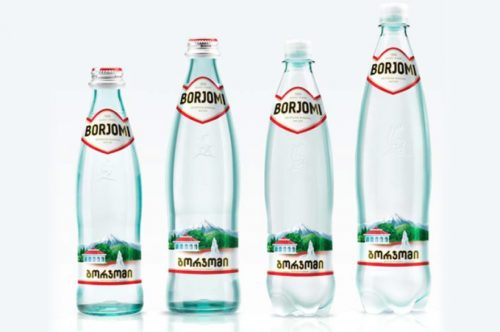
Among the most famous alkaline mineral waters are:
- "Borjomi"
- Donat Mg;
- "Raid";
- "Ploskovskaya";
- "Smirnovskaya".
Reviews and results
In the presence of gastritis and inflammation of the esophagus, the diet should be followed for at least two months. But even after this time, it is important to exclude foods that can cause deterioration: spicy foods and seasonings, hot sauces, fresh garlic and onions, horseradish, mustard, fried foods.
At first, it seems difficult to eliminate spices, and boiled food may seem bland and lacking in taste. However, patients quickly get used to it and note that changing their diet really helps get rid of discomfort in the stomach and esophagus, heartburn, belching and even bloating.
- “... In the summer, my stomach hurt and heartburn appeared. I did a gastroscopy - gastritis and reflux esophagitis, a weakly positive test for Helicobacter. They prescribed Pariet, De-nol for a month and a half and a diet. It gradually became better, it helped me - there was no pain, no belching, no heartburn. The diet helps: oatmeal with water (you can steam it and add dried apricots, but not from the first week), boiled and stewed vegetables for lunch, buckwheat, boiled fish/chicken. In the evening, porridge or mashed potatoes and a boiled egg. In general, for two months everything was barely stewed and boiled. Since I don’t always follow a diet, exacerbations happen 2 times a year and more often after spicy or pickled vegetables.”
- “... I improved my condition with a diet - I survived it for two months, because I love spices, pepper and generally everything spicy. Mostly I ate porridge (sometimes milk), cottage cheese with milk, steamed cutlets (from any meat - chicken, turkey, beef). I didn’t puree porridges and soups, I added few vegetables. A month later I felt relief, but decided to sit still. You can lose some weight with nutritional therapy. After a strict diet, I feel much better - no pain, discomfort or heartburn. Now I only occasionally allow myself spicy food in small quantities. After eating, I make weak green tea and add a pinch of cinnamon or simply brew cinnamon with boiling water. It soothes the esophagus and eliminates heartburn, it helps me a lot.”
- “... I was bothered by a constant burning sensation in the esophagus and pain. I think it was due to a nervous disorder. I went on a strict diet, in which I needed to eat everything separately: porridge and meat, soups, vegetables, cottage cheese, and at night I drank non-sour fermented baked milk. I excluded sweets and sugar, potatoes, bread, semolina and bananas. I drank tea with honey. This helped me, as I had heartburn from sweet and sour foods, spices and fried foods. A steamer and a multicooker helped me. So I spent 1.5 months on a strict diet and noticed that the sour belching and heartburn went away without pills. My family became involved in my nutrition, so cooking became easier. Eating like this is boring, but it’s worth doing it because of your health.”
Diet Basics
For esophageal esophagitis and reflux, the diet should be physiologically complete and balanced: include a sufficient amount of nutrients (proteins, fats, carbohydrates), minerals and vitamins. Therapeutic nutrition minimizes chemical and mechanical irritation of the mucous membrane, stopping inflammatory processes. This allows you to normalize the motility of the digestive organs and the synthesis of gastric juice.
The diet for GERD with esophagitis involves eating according to table No. 1 according to Pevzner. It will be necessary to exclude foods that stimulate the secretory activity of the stomach, are difficult to digest, have an irritating effect, and cause increased gas formation. This will help reduce the load on the gastrointestinal tract.
Gastroesophageal reflux disease is a unique disease that requires an individual diet. The same dish can cause different reactions in patients, so the diet is determined by the patient independently through trial and error. The absence or appearance of heartburn will be an indicator of the stomach's reaction to the foods eaten. It is recommended to keep a food diary in which your diet and body reactions are recorded. This will help you create your own list of products that may not coincide with generally accepted medical recommendations.
Dietary table No. 1 involves eating small portions 5-6 times a day (after eating, the stomach should be only 1/3 full). The interval between meals should not exceed 4 hours. This will reduce the frequency of attacks and will facilitate the rapid evacuation of food from the intestines. It is recommended to use small dishes so that you don’t feel like you haven’t eaten enough.
After eating, it is forbidden to lie down, play sports, run or jump. The last meal should occur 2-3 hours before bedtime. Immediately before bed, you are allowed to drink 200 ml of kefir, yogurt or fermented baked milk.
A diet for reflux esophagitis involves eating pureed, pureed and porridge-like foods. Dishes of this consistency reduce the production of hydrochloric acid and prevent the acidic contents of the stomach from refluxing into the esophagus. This is important to consider when creating a diet for erosive reflux esophagitis. Boiled, baked or steamed fish and lean meat in pieces are also allowed.
Daily amount of nutrients:
- Squirrels. The daily requirement of an adult is 80-90 g, of which 50% should be of animal origin.
- Carbohydrates. Requirement – 300-350 g per day. Simple sugars should not exceed 20%.
- Fats. The daily requirement is up to 70 g, with the share of vegetable fats being 40%.
The calorie content of the therapeutic diet is on average 2300 kilocalories.
